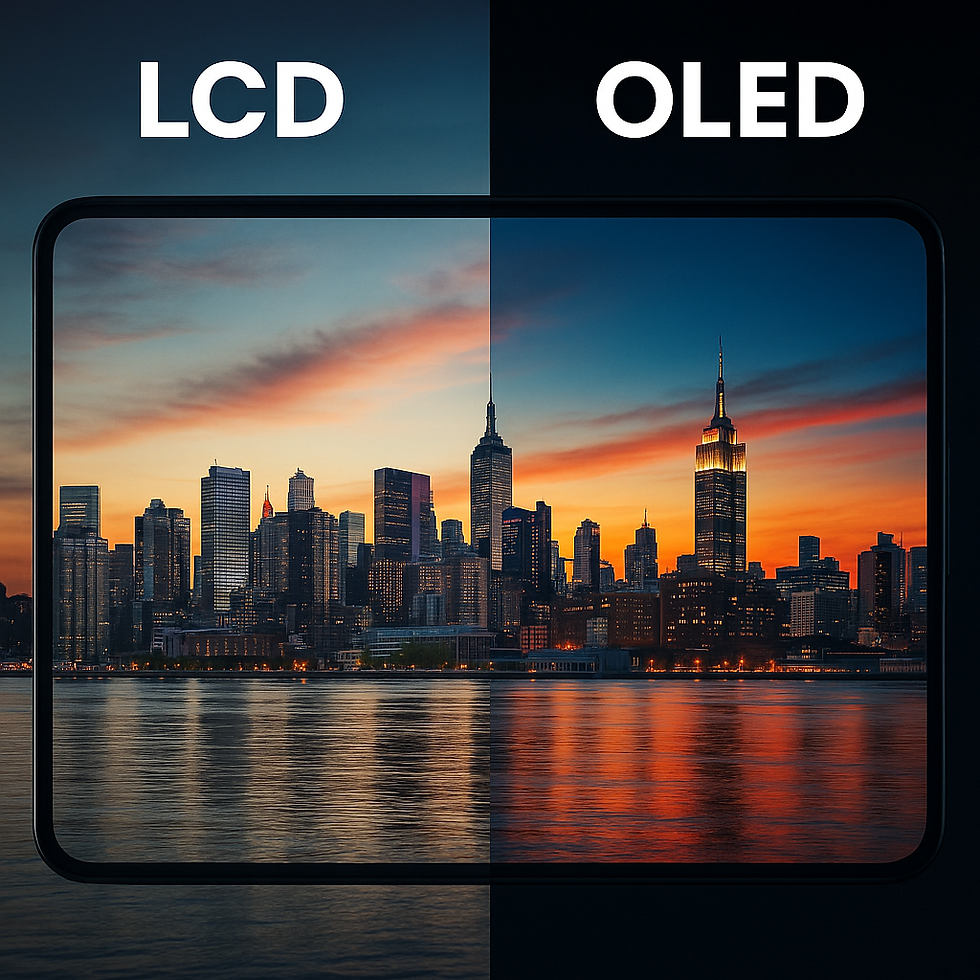
LCD vs. OLED: What’s the Difference and Which is Better for You?
- Muhammad Shaheer
- Aug 17
- 2 min read
When it comes to phone, tablet, or laptop displays, the two most common technologies you’ll hear about are LCD (Liquid Crystal Display) and OLED (Organic Light Emitting Diode). Both have their strengths, but understanding the differences can help you make a smarter choice when repairing or upgrading your device.
What is LCD?
LCD screens use a backlight that shines through liquid crystals to create images. These crystals don’t produce their own light—they control how much of the backlight passes through to form colors and pictures.
Key Points:
Uses a backlight, so blacks are more like dark gray
Generally more affordable than OLED
Durable and long-lasting technology
Can be brighter in some cases, making it easier to see in direct sunlight
Slightly thicker compared to OLED displays
What is OLED?
OLED technology uses organic compounds that emit their own light when powered. This means no backlight is needed, resulting in deeper blacks and vibrant colors.
Key Points:
Self-emissive pixels = true blacks and infinite contrast
More vibrant colors and improved viewing angles
Thinner and lighter than LCDs
Often found in premium devices
Potential for screen burn-in over time (though rare in modern devices with software protection)
Which One Should You Choose?
If you want a budget-friendly, durable option, LCD is the way to go.
If you want deeper blacks, brighter colors, and a premium feel, OLED is the better choice.
For devices where display quality really matters—like flagship phones or high-end tablets—OLED usually wins.
For everyday use, repairs, and affordability, LCD is still a solid choice.
💡 At ThrifTech Welland, we offer both LCD and OLED screen replacements for phones, tablets, and laptops. Whether you want the most cost-effective repair or the highest quality display, we’ve got you covered.



Comments